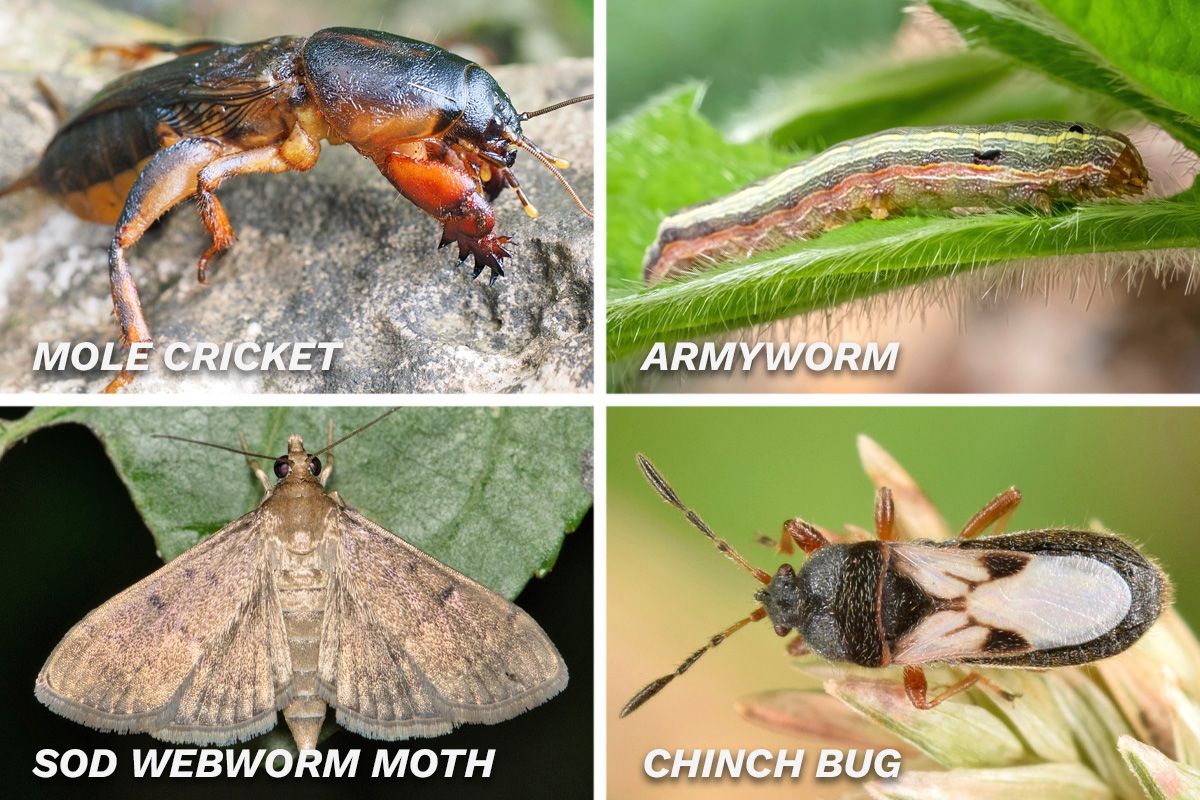
Tampa’s warm, sunny climate is perfect for growing a fantastic lawn, but it’s also ideal for pests that feed on it.
Chinch bugs, mole crickets, sod webworms, and armyworms thrive here, munching on grass and roots with such vengeance that they can ravage a sizable swath of lawn in no time.
You don’t have to fall victim to these tiny turf terminators, though. You just need to understand when they generally appear, how they behave, how to spot warning signs, and what products eliminate them most effectively.
Chinch Bugs
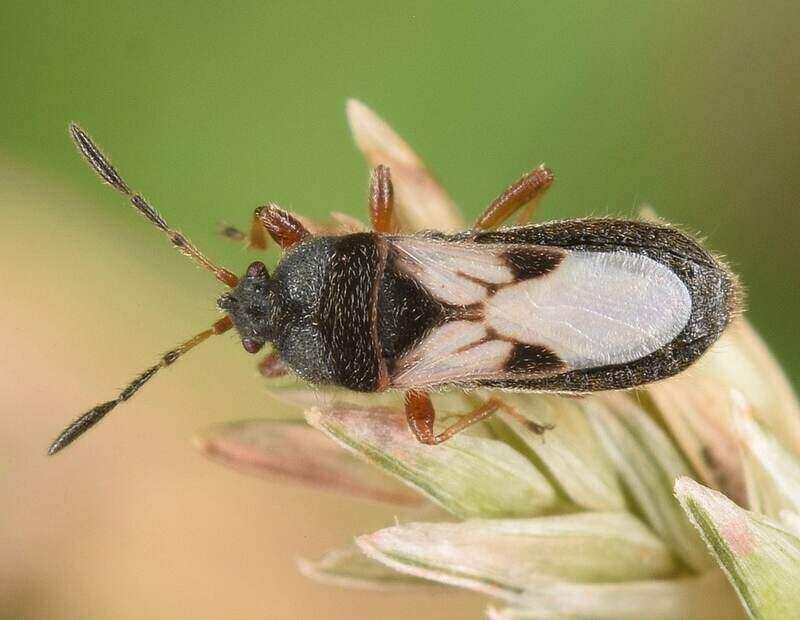
These tiny insects remove sap from grass blades and inject toxins that slowly kill the grass. Chinch bugs love St. Augustinegrass, especially where thick thatch builds up in full sun. Damage usually begins in early July and continues through August, which lines up with Tampa’s hottest stretch of summer.
Identification
Adult chinch bugs are about ⅕ inch long and have black bodies with white wings. You won’t know they have infested your lawn until the grass starts turning yellow, then reddish brown, then dies.
After you spot damage, look for these pesky creatures in a healthy area next to the damaged section. You might see chinch bugs rollicking around the base of the grass stems. You’ll need to look closely, as they blend in with thatch.
Perform a coffee can test to determine the level of chinch bug infestation in your lawn. Remove both ends of the can to create a hollow cylinder, insert one end two to three inches into the soil, fill it with water, and count the number of bugs that float to the surface. If there are more than 25 chinch bugs per square foot, the infestation is severe.
Prevention and Elimination
A strong lawn care regimen is key to prevention because thick, healthy turf is not ideal for bugs. Dethatch once a year, aerate when needed, mow at the right height, water deeply, and fertilize. If they still show up, you can get rid of them by introducing natural predators or using insecticides.
For more information, check out our article on How to Get Rid of Chinch Bugs.
Mole Crickets
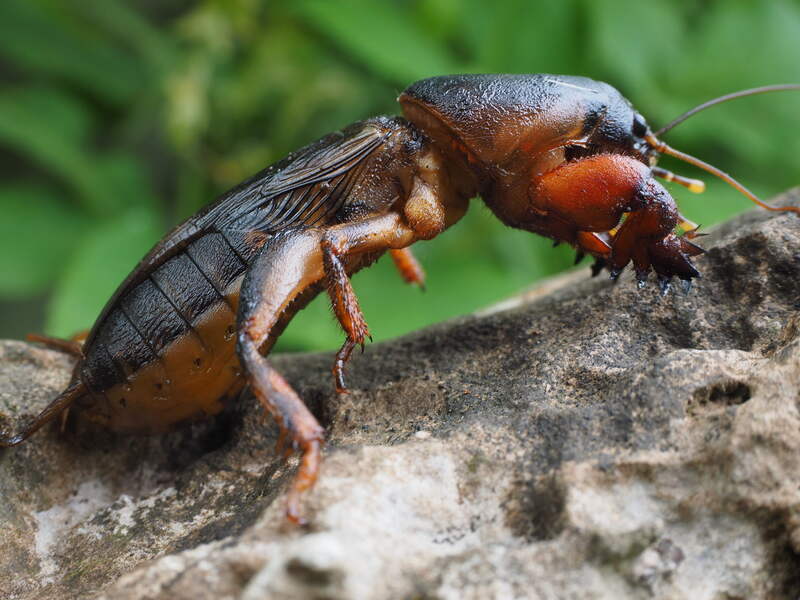
Mole crickets don’t just feed on grass; they also tunnel through the soil, uprooting grass and severing roots. Mole crickets are most destructive from late August through early October, leaving ugly brown patches on your lawn. They attack all types of grasses, but they love to feed on warm-season varieties that thrive in Tampa’s climate.
To make matters worse, predators like raccoons and armadillos love to snack on them and will dig up your lawn to get to them.
Identification
Mole crickets are about 1½ inches long with velvety gray-brown bodies. They have wings and forelegs shaped like little spades for tunneling beneath the ground. You can spot them by spongy turf, brown patches, or small mounds of soil in your yard.
Here’s a quick test to check if mole crickets are your problem: Mix 1½ ounces of dishwashing liquid with two gallons of water. Sprinkle the mixture over a four-square-foot section of your lawn. If mole crickets are wreaking havoc, you’ll see a few within minutes.
Prevention and Elimination
Dethatching, mowing at the right height, and watering properly can help keep mole crickets in check. If they do show up, apply targeted insecticides in late spring or early summer, when they are still young and more susceptible. If you don’t spot them early, apply the insecticide after you see visible signs of damage.
You can also use baits containing indoxacarb or carbaryl to get rid of them. I recommend combining insecticides with baits for quick results.
For more information, check out our article on How to Get Rid of Mole Crickets.
Sod Webworms
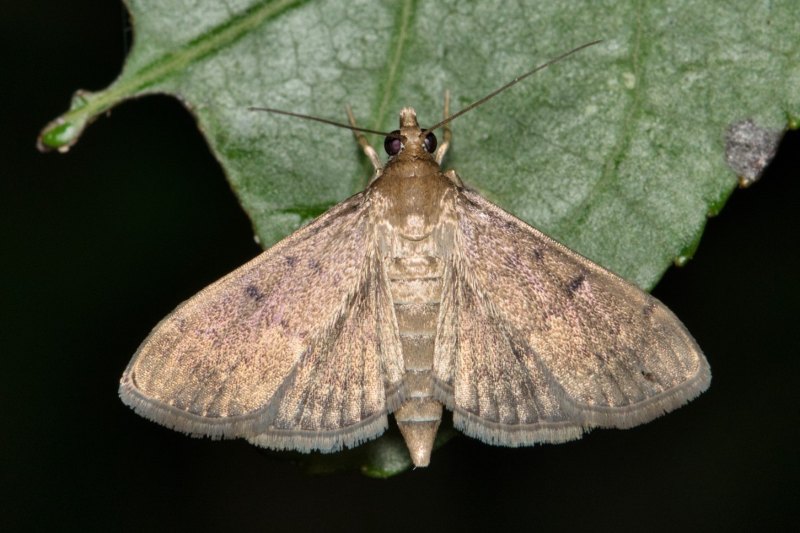
Sod webworms are the larvae of a small brown moth that lays eggs in your grass. These caterpillars chew through grass blades at night and are tucked inside their cozy burrows in the damaged areas of the lawn.
Sod webworms attack all types of grasses, as well as plants and shrubs, but their favorite targets are Bermuda and St. Augustine lawns. You’ll see the first signs of damage in the spring, with chewed blade tips and patches of shorter grass. But lawns usually sustain the most damage in August.
Identification
These pests are about ¾ inches long with green bodies and numerous black spots. They feast on grass every day, leaving irregular patches of yellowish brown grass. Brown spots could also indicate a different problem, but take a closer look at the grass, and if you spot a grazed or scalped appearance, sod webworms are the culprits.
Still not sure? Do a drench test. Mix two tablespoons of dish soap with two gallons of water and pour the solution in multiple spots around your yard. Sod webworms will get irritated and rise to the soil surface, so you can count them.
Prevention and Elimination
Dethatch your lawn and apply insecticides specific to sod webworms to eliminate them. Apply in the late afternoon or early evening, as these pests become active later in the day. You can also use beneficial nematodes to control sod webworms.
For more information, check out our article on How to Get Rid of Sod Webworms.
Armyworms
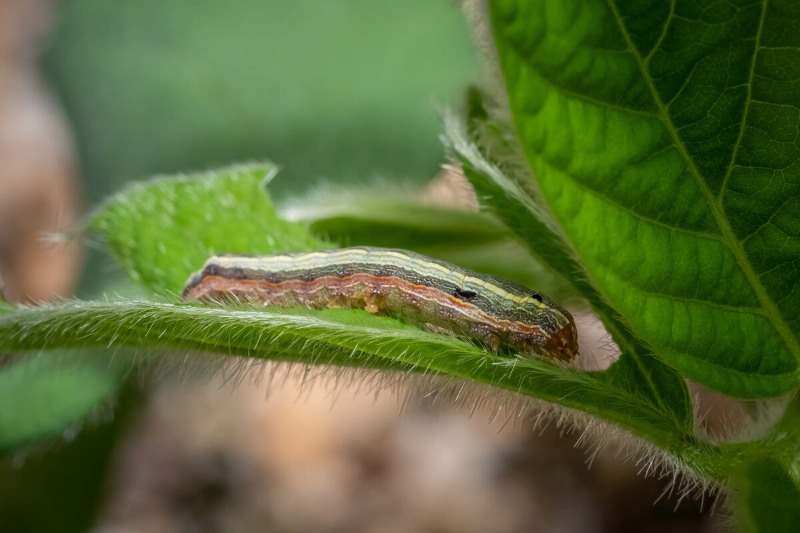
Armyworms aren’t actually worms at all; they are caterpillars that morph into small gray and brown moths. These pests are so named because they travel in small armies, eating everything in their path. Their favorite paths are through Bermudagrass.
Armyworms feed on your grass and lay their eggs on its blades. After two to three weeks of feeding, the caterpillars bury themselves in the top inch of soil and emerge two weeks later as moths. And the cycle continues.
Identification
Armyworms are 1 to 1½ inches long and are greenish-brown to black with white, orange, and brown stripes on their abdomens. They eat all the grass above the ground and leave behind large brown patches. Armyworms are most active between August and October.
If there’s a sudden increase in birds in your yard, that’s another clue that you might have armyworms. Birds love to snack on armyworms, but unfortunately, they don’t eat enough of them to get the infestation under control.
Prevention and Elimination
Insecticides work best against armyworms, but you can also use natural predators like ladybugs and lacewings, or apply beneficial nematodes to get rid of them. If there are only a few, you can even hand-pick them.
For more information, check out our article on How to Get Rid of Armyworms.
For more information on maintaining Tampa lawns, check out these articles:
- Best Grasses for Tampa
- Summer Lawn Care Guide for Tampa
- Spring Lawn Care Tips for Tampa
- Fall Lawn Care Tips for Tampa
Protect Your Tampa Lawn From Destructive Pests

It’s best to protect your lawn from pests rather than treat them after an infestation. However, even with proper maintenance, pests can still rear their ugly little heads. For severe cases, it’s best to call a pro.
LawnStarter’s Tampa lawn care pros will get rid of the pests and keep your lawn fresh and healthy. We also have local lawn care pros in St. Petersburg, Apollo Beach, Valrico, and throughout the Tampa Bay area. Call, click, or book pest control service in our app.
Main Image: Mole cricket, armyworm, sod webworm moth, and a chinch bug. Image Credit: Illustration by Whitney Lehnecker / LawnStarter; photos from Adobe Stock and Wikimedia Commons.